Neill Campbell
8-Calves Image dataset
Mar 17, 2025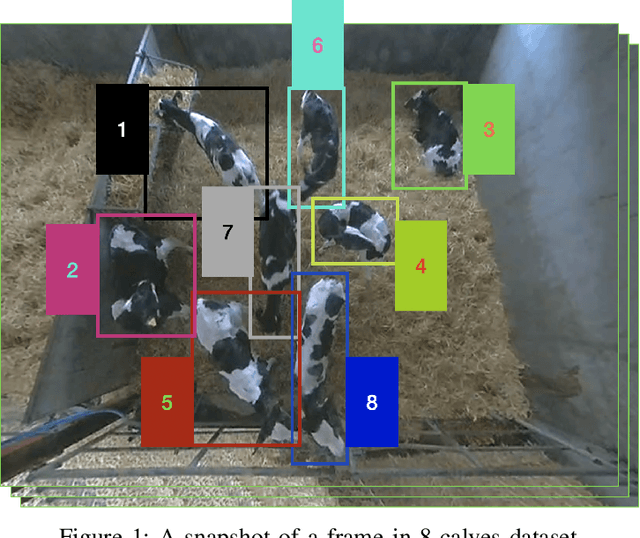
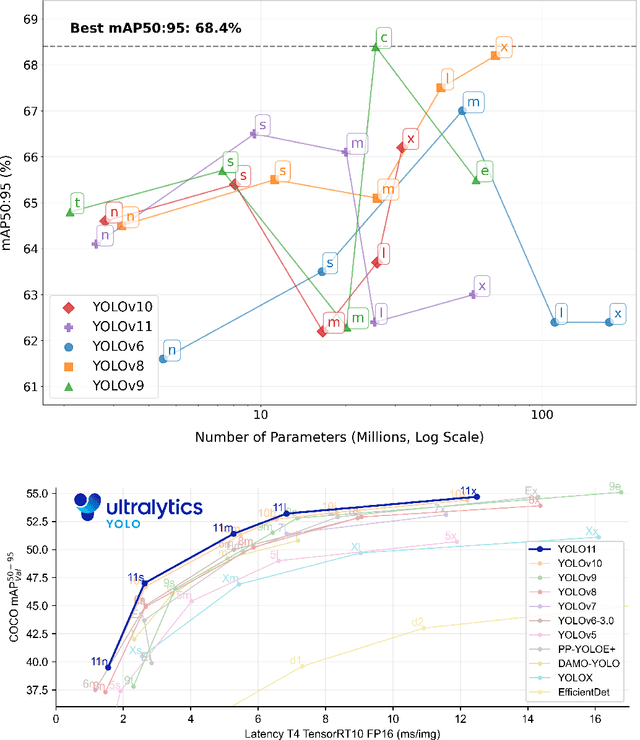
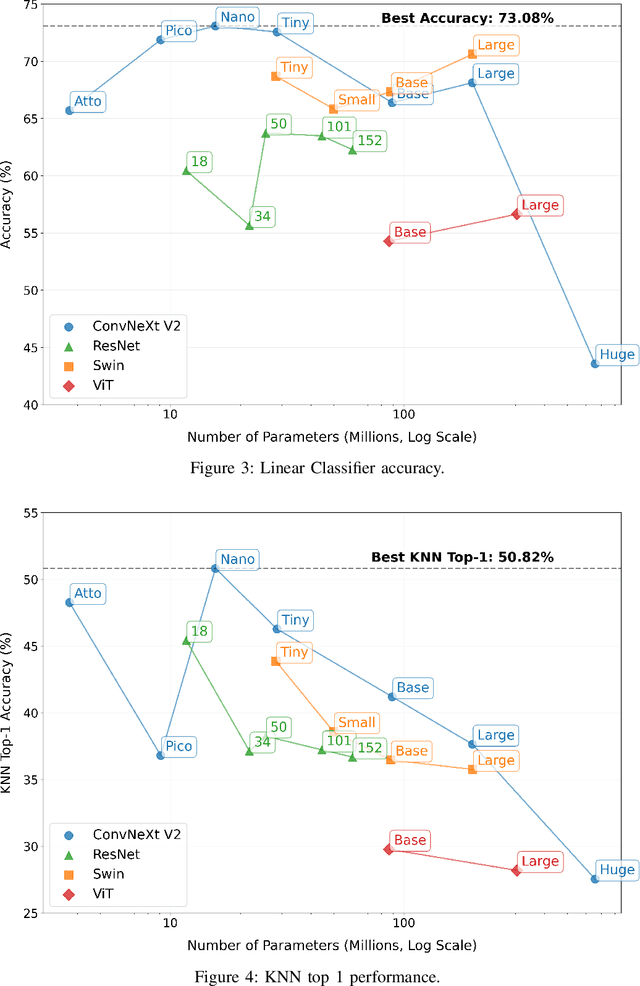
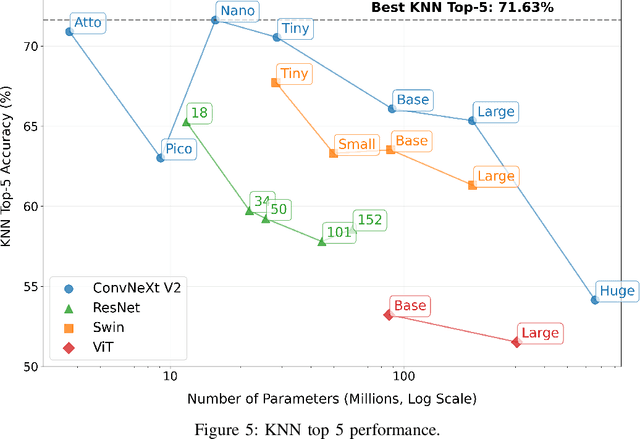
Abstract:We introduce the 8-Calves dataset, a benchmark for evaluating object detection and identity classification in occlusion-rich, temporally consistent environments. The dataset comprises a 1-hour video (67,760 frames) of eight Holstein Friesian calves in a barn, with ground truth bounding boxes and identities, alongside 900 static frames for detection tasks. Each calf exhibits a unique coat pattern, enabling precise identity distinction. For cow detection, we fine-tuned 28 models (25 YOLO variants, 3 transformers) on 600 frames, testing on the full video. Results reveal smaller YOLO models (e.g., YOLOV9c) outperform larger counterparts despite potential bias from a YOLOv8m-based labeling pipeline. For identity classification, embeddings from 23 pretrained vision models (ResNet, ConvNextV2, ViTs) were evaluated via linear classifiers and KNN. Modern architectures like ConvNextV2 excelled, while larger models frequently overfit, highlighting inefficiencies in scaling. Key findings include: (1) Minimal, targeted augmentations (e.g., rotation) outperform complex strategies on simpler datasets; (2) Pretraining strategies (e.g., BEiT, DinoV2) significantly boost identity recognition; (3) Temporal continuity and natural motion patterns offer unique challenges absent in synthetic or domain-specific benchmarks. The dataset's controlled design and extended sequences (1 hour vs. prior 10-minute benchmarks) make it a pragmatic tool for stress-testing occlusion handling, temporal consistency, and efficiency. The link to the dataset is https://github.com/tonyFang04/8-calves.
Universal Bovine Identification via Depth Data and Deep Metric Learning
Mar 29, 2024
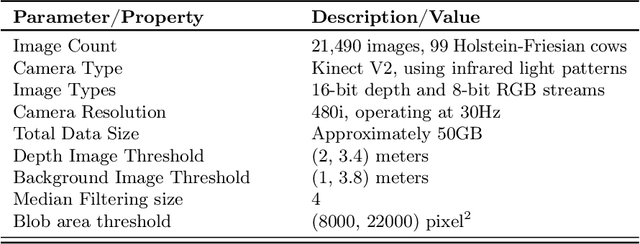
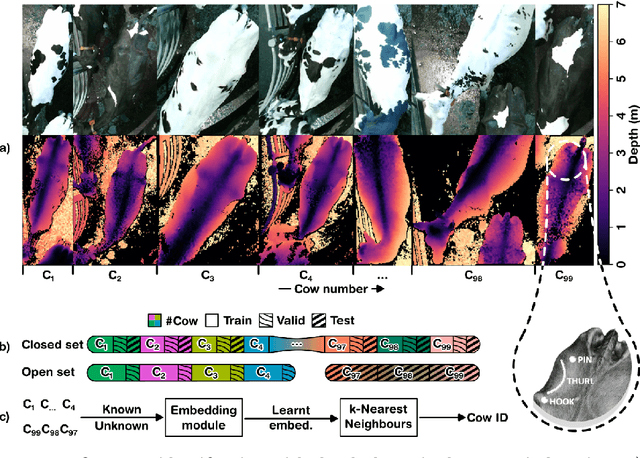
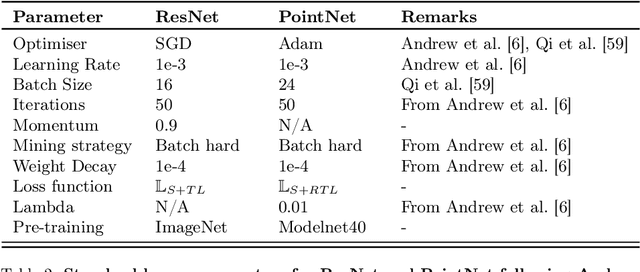
Abstract:This paper proposes and evaluates, for the first time, a top-down (dorsal view), depth-only deep learning system for accurately identifying individual cattle and provides associated code, datasets, and training weights for immediate reproducibility. An increase in herd size skews the cow-to-human ratio at the farm and makes the manual monitoring of individuals more challenging. Therefore, real-time cattle identification is essential for the farms and a crucial step towards precision livestock farming. Underpinned by our previous work, this paper introduces a deep-metric learning method for cattle identification using depth data from an off-the-shelf 3D camera. The method relies on CNN and MLP backbones that learn well-generalised embedding spaces from the body shape to differentiate individuals -- requiring neither species-specific coat patterns nor close-up muzzle prints for operation. The network embeddings are clustered using a simple algorithm such as $k$-NN for highly accurate identification, thus eliminating the need to retrain the network for enrolling new individuals. We evaluate two backbone architectures, ResNet, as previously used to identify Holstein Friesians using RGB images, and PointNet, which is specialised to operate on 3D point clouds. We also present CowDepth2023, a new dataset containing 21,490 synchronised colour-depth image pairs of 99 cows, to evaluate the backbones. Both ResNet and PointNet architectures, which consume depth maps and point clouds, respectively, led to high accuracy that is on par with the coat pattern-based backbone.
Visual Identification of Individual Holstein-Friesian Cattle via Deep Metric Learning
Jul 04, 2020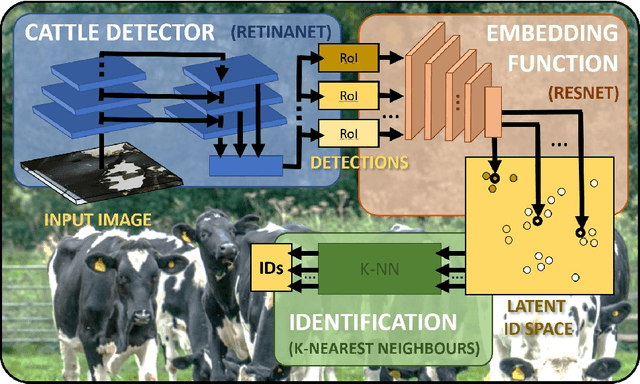

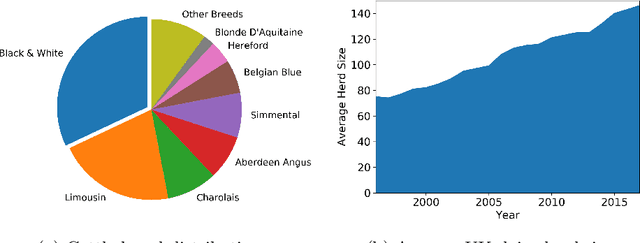

Abstract:Holstein-Friesian cattle exhibit individually-characteristic black and white coat patterns visually akin to those arising from Turing's reaction-diffusion systems. This work takes advantage of these natural markings in order to automate visual detection and biometric identification of individual Holstein-Friesians via convolutional neural networks and deep metric learning techniques. Existing approaches rely on markings, tags or wearables with a variety of maintenance requirements, whereas we present a totally hands-off method for the automated detection, localisation, and identification of individual animals from overhead imaging in an open herd setting, i.e. where new additions to the herd are identified without re-training. We propose the use of SoftMax-based reciprocal triplet loss to address the identification problem and evaluate the techniques in detail against fixed herd paradigms. We find that deep metric learning systems show strong performance even when many cattle unseen during system training are to be identified and re-identified - achieving 98.2% accuracy when trained on just half of the population. This work paves the way for facilitating the non-intrusive monitoring of cattle applicable to precision farming and surveillance for automated productivity, health and welfare monitoring, and to veterinary research such as behavioural analysis, disease outbreak tracing, and more. Key parts of the source code, network weights and underpinning datasets are available publicly.
 Add to Chrome
Add to Chrome Add to Firefox
Add to Firefox Add to Edge
Add to Edge